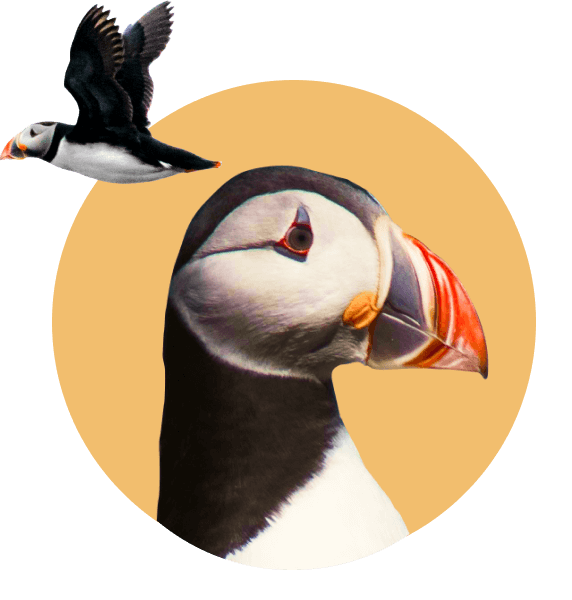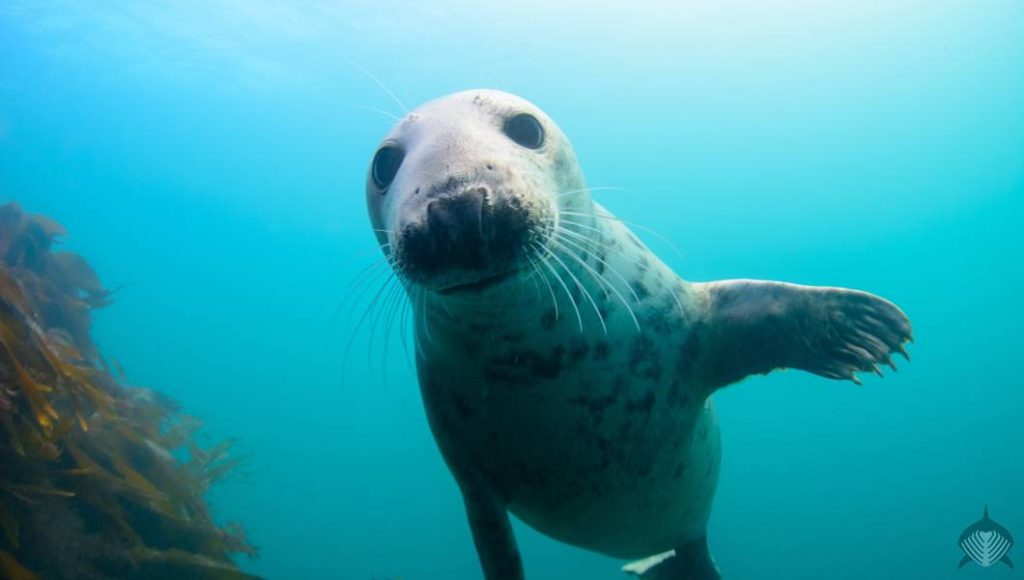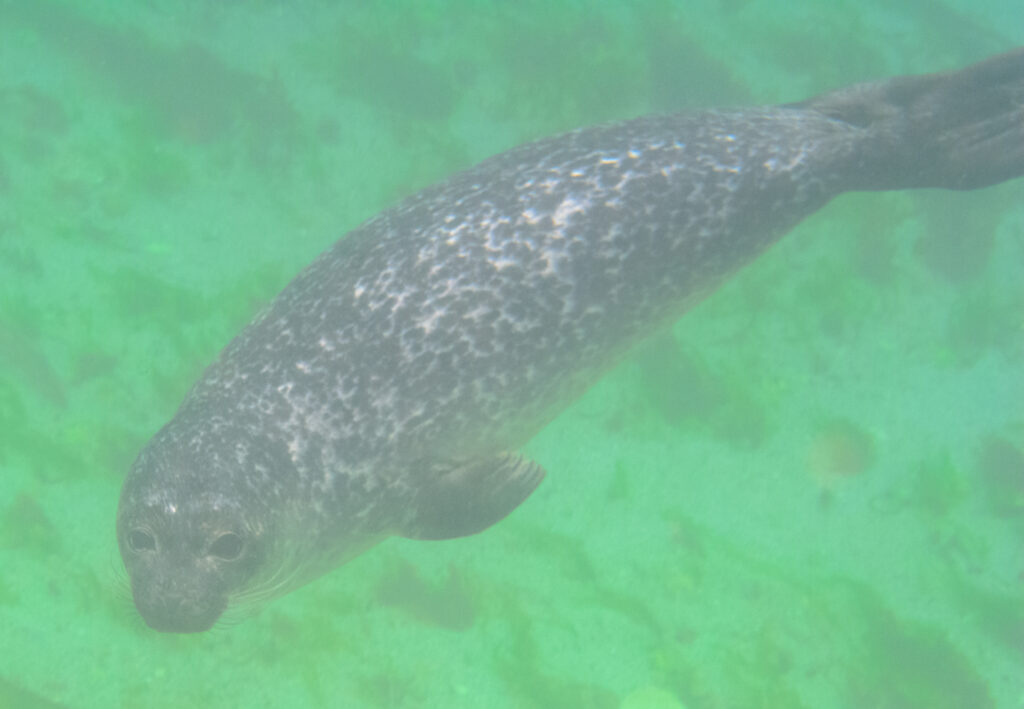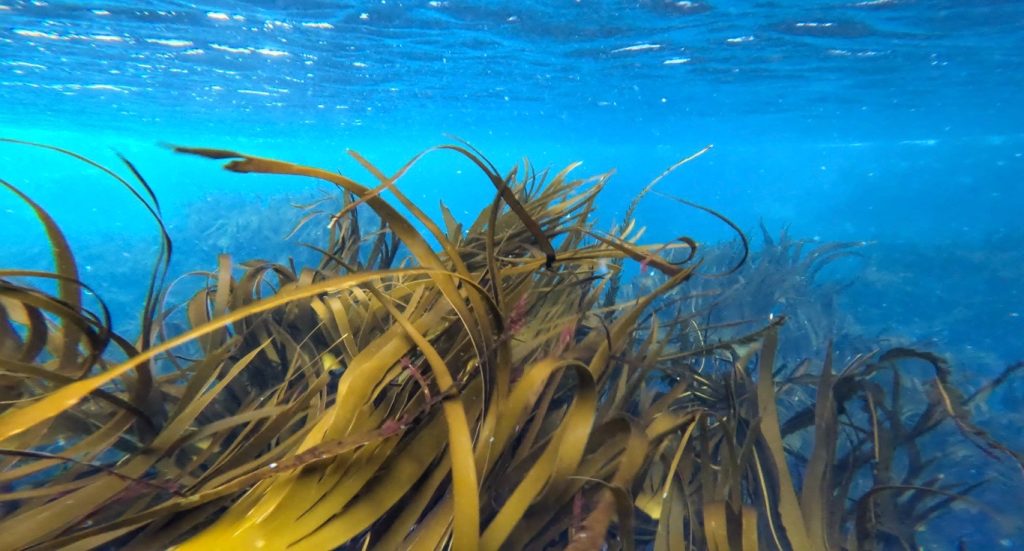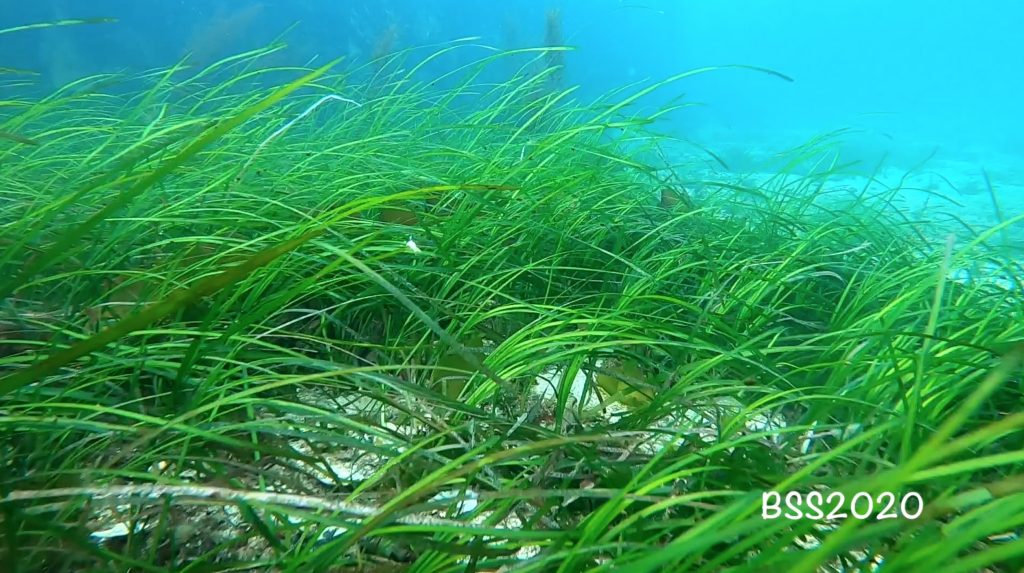
WHAT CAN YOU SEE SNORKELLING IN SCOTLAND?
Sep 29 2023
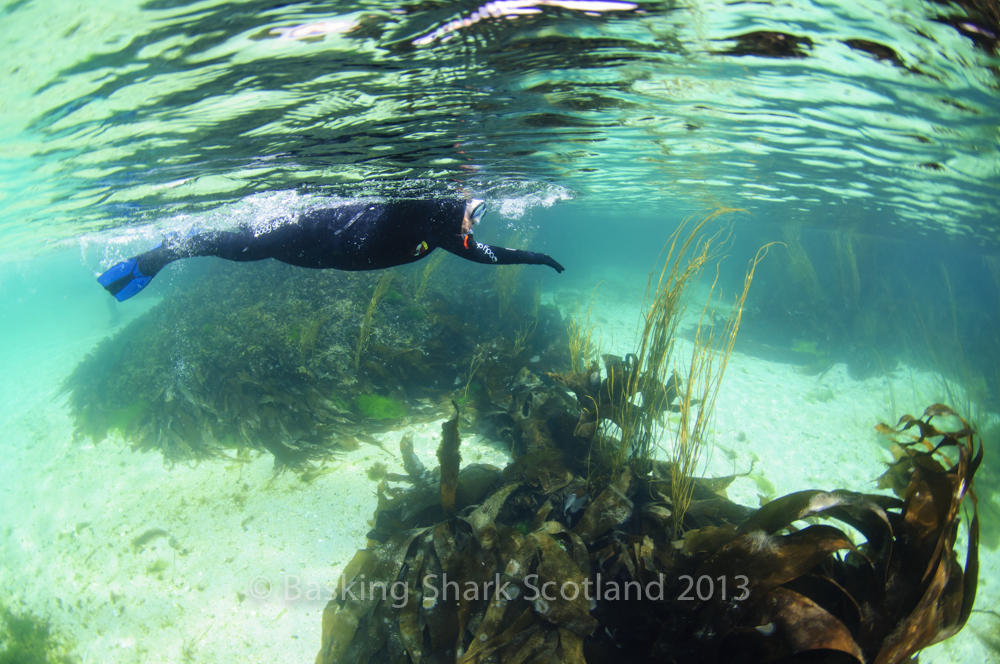
Visiting the West coast of Scotland, one thing you will notice is how incredibly clear the waters are. Under the surface lives a multitude of interesting species and the clear waters make snorkelling a very popular activity here. Through lots of our trips, you can come and see the incredible life under the water that we have to offer. Below is just a handful of things you may see when snorkelling around our Argyll coast and the Inner Hebrides. For a full guide to Atlantic marine life, check out our underwater wildlife guide here.
Basking Shark (Cetorhinus Maximus)
Appearance: At an average of 10 metres long, Basking sharks are the biggest fish in Scotland and the UK as well as being the second largest shark in the world. They have a large mouth which reaches up to 1 metre wide and their gill slits are lined with a special organ known as gill rakers. They have tall triangular dorsal fins which can sit 1 metre high. Their colouring is usually dark grey with various patterns and markings along their flank.
Behaviour: They are 1 of 3 planktivore (plankton-eating) sharks, cruising along on the surface gulping in large quantities of water and filtering out the plankton using their gill rakers. Basking sharks have a large migration pattern and return to our islands in spring time which usually coincides with the first plankton bloom. Not much is known in terms of shark reproduction however we do know that they are ovoviviparous which means that at first the sharks are developed in egg sacs that hatch inside the parent before being birthed live.
When to see: April to October is when Basking sharks are spotted with the peak season being July and August. After September/October time, they start their southerly migrations.
Fun fact: Did you know that Basking sharks can fully breach out of water? They are the largest shark in the world to do this and as it stands, we are not sure why it is that they do this. There are a few theories to this, one being that it is to rid themselves of parasites and the other explanation is to do with their courtship behaviours.
Grey Seal (Halichoerus Grypus)
Appearance: The largest of our 2 seal species, growing up to 2 metres long; Grey seals are usually grey in colour with dark spots and markings. They are distinguishable from their smaller relative, the Common Seal, by their facial features. Grey seals have a longer head and elongated muzzle with nostrils that are parallel to each other.
Behaviour: They spend most of their time out at sea feeding on fish but are often found hauled out at many spots around the coast. The UK is home to 40% of the world’s population of Grey seals and 90% of this number is in Scotland. They breed between October – February time hauling out on rocky sites around the coast. They give birth to a fluffy white pup which does not have a waterproof coat so they stay on land until they have got an adult coat and trebled their weight.
When to see: January to December.
Fun fact: Did you know that the scientific name for Grey seals (Halichoerus grypus) translates to Hook-nosed sea pig?
Common/Harbour Seal (Phoca Vitulina)
Appearance: Common seals are our smaller UK species. Often referred to as ‘puppy-like’ due to their short muzzle and rounded head, they have v-shaped nostrils that meet at the bottom. They are usually light brown/grey in colour.
Behaviour: Common seals spend most of their time at sea but frequently haul out around the coast and islands to rest or to give birth. They usually give birth in June and July and their pups shed their coat whilst inside the parent meaning they can enter the water as soon as they are born. Adult seals tend to return to the same haul-out area year after year and they are usually seen in their infamous ‘banana pose’ with both head and tail in the air.
When to see: January to December.
Fun Fact: Did you know common seals can reach depths of up to 50 metres and spend around 10-15 minutes under the water? They have far more haemoglobin in their blood than us so they can stay under water for a substantial amount longer than we can!
Kelp Forests
Appearance: Kelps are large seaweeds that can form very dense underwater forests. They are mostly brown in colour and can grow to over 30 metres in certain areas around our Scottish coasts. They have hard stalks known as stipes and fronds which grow out like leaves.
Behaviour: Kelp forests are one of the most incredibly diverse ecosystems on the planet with many species living amongst them for shelter and protection. They also act as a buffer against storms and protect much of the land around the coasts from erosion. Kelps rely on sunlight to survive so the clear waters around much of our coasts allow kelp forests to thrive.
Fun facts: Did you know that there is a growing interest in using Scotland’s seaweed in a number of industries including foods, textiles and also pharmaceuticals? When on one of our Isle of Coll trips, you may get a chance to try the Isle of Coll gin which uses harvested kelp from the island to flavour the gin.
Sea Grass
Appearance: Seagrass is a green flowering plant that grows in shallow and sheltered areas around our coasts, made up of 2 species; Eelgrass and Dwarf eelgrass. They can grow up to 1 metre in length.
Behaviour: These seagrasses form large meadows across the sea bed and they are hosts to an abundance of life. They are classed as a Priority Marine Feature (PMF) which are habitats or species that we prioritise within marine conservation in Scottish waters. They are different to seaweed as they have roots and leaves and can produce flowers, fruits and seeds.
Fun fact: Did you know that seagrasses can actually store double the amount of carbon per kilometre squared than a land-based forest?
Common Sea Urchin (Echinus Esculentus)
Appearance: The Common sea urchin, also known as the edible sea urchin is round and covered in short and sharp spines. They are usually pink in colour but can be yellow, green or red and grow to around 15cm in diameter. Their mouth is found on their underside and is made up of 5 plates that act as a jaw – this is known as ‘Aristotle’s lantern.’
Behaviour: They have an impressive depth range and are found on seabeds from the intertidal zone to depths of more than 1200m. Urchins are very active grazers feeding on many things including seaweeds and barnacles.
When to see: January to December
Fun fact: Did you know that the scientific name ‘Echinus’ comes from the Greek word for Hedgehog?
These are just a small percentage of the incredible species that you may see when joining us on a snorkel trip. If you enjoyed this fact file, look out for the full version here.
Check out our tours here and come and see what life you can find!
